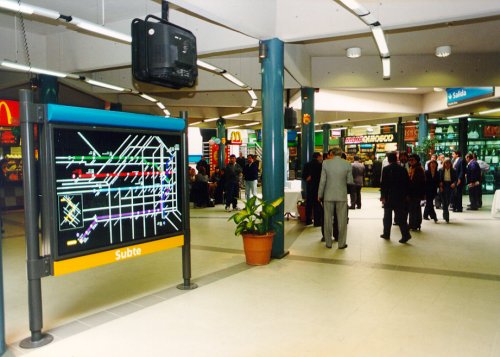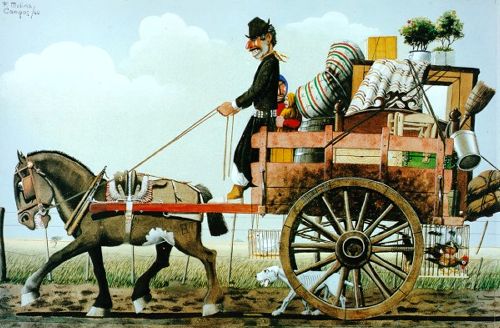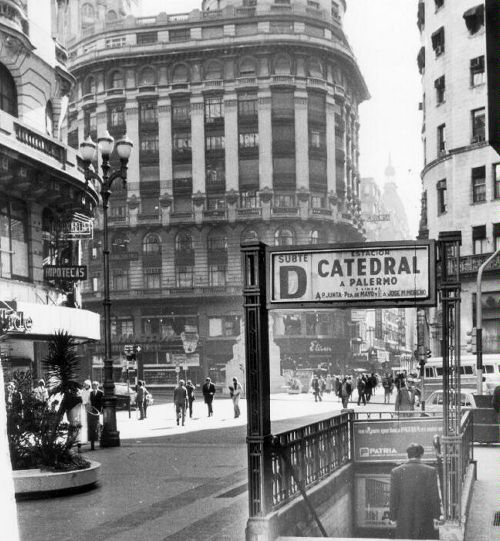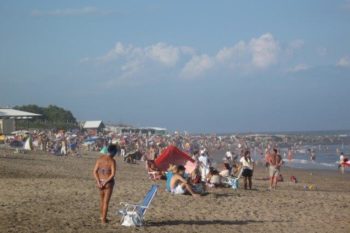December 1st, 2013 marked the 100th anniversary of the Buenos Aires underground.
The Compañía de Tranvías Anglo-Argentina (the Anglo-Argentine Tramway Company) built the first underground line, the A Line, in just 26 months. The line started at Plaza de Mayo and went as far as Plaza Miserere. These are still two of the busiest stations! Then it was extended to Primera Junta, about 7 kilometers from Plaza de Mayo. President Roque Saenz Peña led the official opening ceremony in 1913.

The A Line is my favourite to look at. The stations are beautiful, with antique light fixtures and wrought iron fences. Many have murals painted by famous artists. Some stations, like Congreso, have small exhibitions related to what’s above street level. In this case, since the National Congress is above, some memorabilia related to parliamentary life is on display. All the stations have tiled walls and each has a stripe in a specific colour so that those who couldn’t read the signs knew which station to get off. And the art is beautiful as well, with murals by well-known artists.

The B Line was finished in 1931; the C Line was started in 1937; the D Line, in 1940 and the E Line, in 1944. New stations have been added since then in a much needed overhaul of the city’s public transport. The new H Line was begun in 2007.

The original 1913 Belgian cars were still in use in as recently as January 2013. They were deemed unsafe and replaced by modern ones. I loved their rattling noise, their comfortable wood seats and the facts that you could open the windows by pulling from a leather strap. These wood cars belong to a romaticised, bygone era.
Happy birthday, subte*!
*Subte is short for subterráneo, the Spanish for underground. Look out for the Subte signs if you’re in Buenos Aires.
Photos: Metrovias website
Read more
Picture Postcards: Historical transport in San Francisco, California USA




